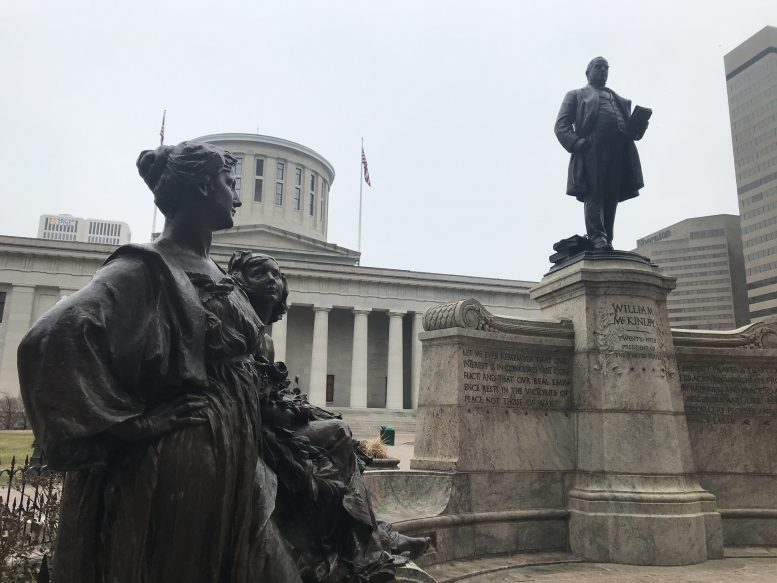BY MEGAN HENRY
The first major hurdle to get a referendum on the November ballot to repeal Ohio’s massive higher education law has been cleared.
Ohio Attorney General Dave Yost certified the title and summary language for a referendum that would repeal Senate Bill 1, set to take effect at the end of June. “My certification of the title and summary… should not be construed as an affirmation of the enforceability and constitutionality of the referendum petition,” Attorney General Dave Yost said in a letter certifying the petition.

S.B. 1 bans diversity efforts, regulates classroom discussion, prohibits faculty strikes, creates post-tenure reviews, puts diversity scholarships at risk, and creates a retrenchment provision that blocks unions from negotiating on tenure, among other things. The law affects Ohio’s public universities and community colleges.
Members of the Youngstown State University’s chapter of the Ohio Education Associationare behind efforts to get the referendum on the Nov. 4 ballot.
With the title and summary language approval, petitioners can now start gathering signatures. About 248,092 signatures are needed — 6% of the total vote cast for governor during the last gubernatorial election. The signatures must be from at least 44 of Ohio’s 88 counties. The signatures would likely be due at the end of June.
Ohio Secretary of State Frank LaRose would then have to verify the signatures before the measure is referred to the Ohio Ballot Board to determine the language that would appear on the November ballot.
The last time a referendum passed in Ohio was 2011 when voters overturned an anti-collective bargaining law.
Some of Ohio’s public universities have started making decisions because of S.B. 1. Ohio University announced it will close the Pride Center, the Women’s Center and the Multicultural Center. The University of Toledo is suspending nine undergraduate programs in response to a controversial new higher education law that is set to take effect this summer.
Also from Ohio Capital Journal:

Ohio economists: Cutting library funding will reduce ‘human capital,’ hurt the economy
A panel of economists overwhelmingly said that if federal and state cuts to public library funding become reality, it will harm “human capital” — knowledge and skill that can be used as an economic resource. A smaller majority said it would also reduce the state’s economic output.
The budget proposed by the Republican-controlled Ohio House would spend almost $91 million less on public libraries than the draft proposed by Gov. Mike DeWine, reports the Ohio Library Council. “Additionally, the Ohio House changed how library funding is allocated,” the library council said last month. “Instead of receiving 1.7% of the state’s General Revenue Fund (GRF)—as established in permanent law—the Public Library Fund (PLF) would become a line-item appropriation. This change could put future library funding at greater risk, as line-item appropriations are more vulnerable to elimination.”
In addition, a group led by Elon Musk, the world’s richest man, has moved to eliminate the Institute of Museum and Library Services, a federal grant-making agency with a budget of $290 million a year. READ MORE
Ohio Elections Commission urges state senators to restore funding in budget
The future is far from certain for the Ohio Elections Commission after House budget drafters moved to eliminate the agency. Now the state Senate gets its turn to tweak the two-year spending plan.
OEC executive director Phil Richter went before a Senate committee last week to make the case for his agency.
The Ohio Elections Commission is a seven-member body that operates as an independent agency with oversight of campaign finance laws. The governor appoints three Democrats and three Republicans who in turn select the unaffiliated seventh member of the commission.
Richter warned state senators that turning campaign finance laws over to an official appointed by the secretary of state or the county board of elections will create chaos.
“Instead of one statewide decision-making body, there will be 89 separate applications of Ohio’s campaign finance laws,” he said. “Instead of one bipartisan, collegial panel, there could be 89 separate decisions made along party lines.” READ MORE





